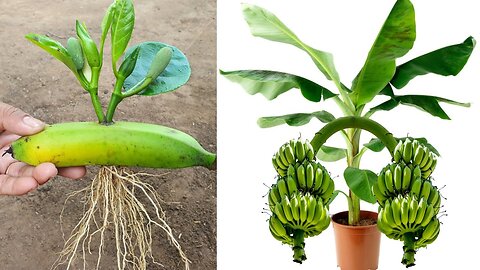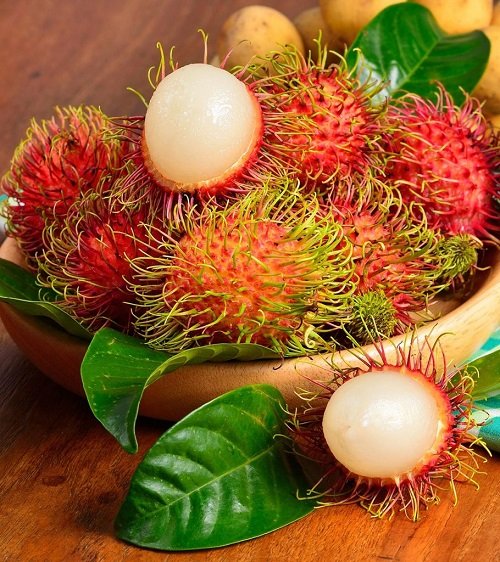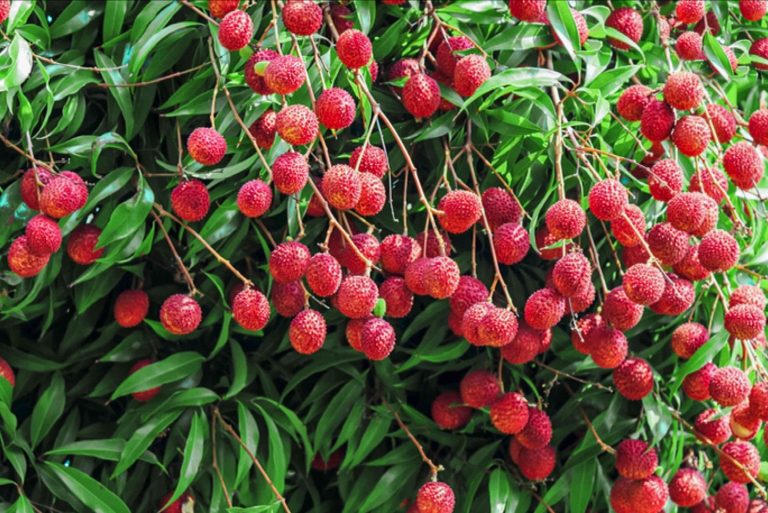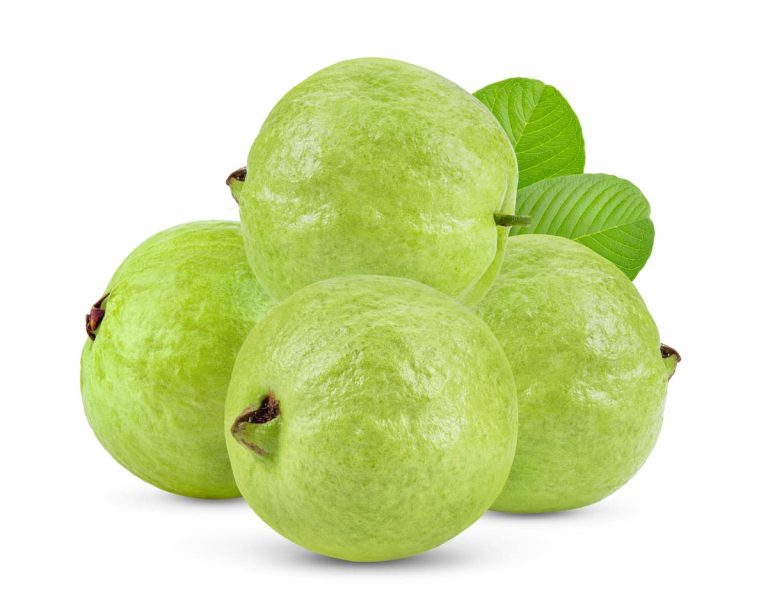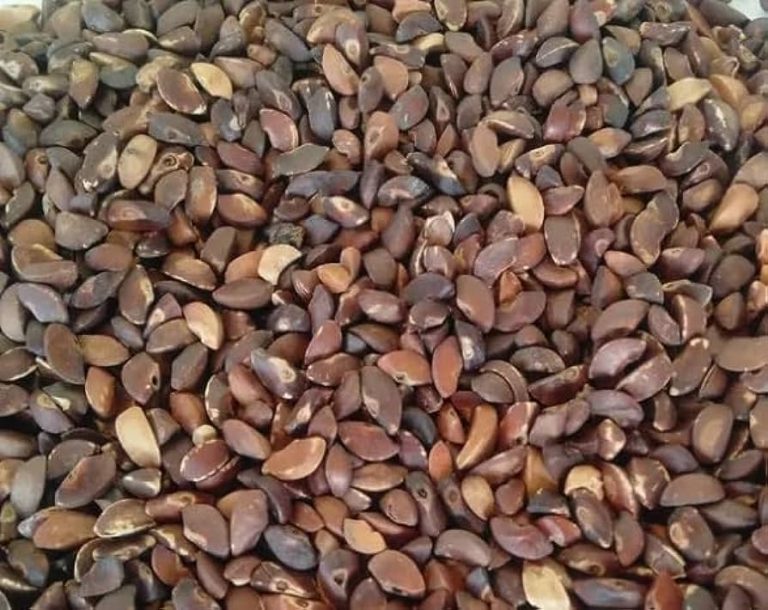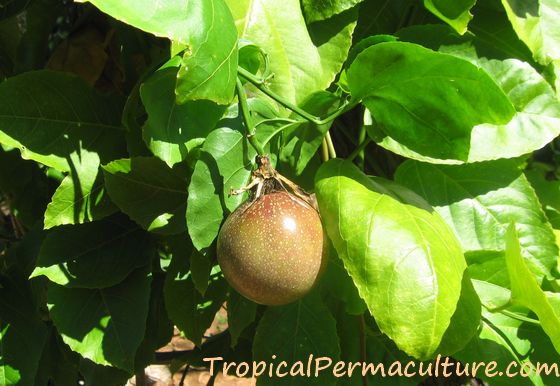Grow Loquat from Seeds: The Ultimate Guide to Propagating a Bountiful Orchard
To grow loquat from seeds, follow these steps: soak the seeds in water for 24 hours, plant them in well-draining soil, keep them moist, and provide sufficient sunlight. Loquat trees can be grown from seeds, but keep in mind that it may take several years for them to produce fruit.
Loquats prefer a warm climate and can be grown outdoors in usda hardiness zones 8 to 10. They are relatively low-maintenance trees and can tolerate a variety of soil conditions. With proper care, you can enjoy the beauty and delicious fruit of your loquat tree for years to come.
Choosing The Right Loquat Seeds For Propagation
Learn how to select the perfect loquat seeds for successful propagation and grow your own loquat tree from scratch. Get step-by-step guidance and tips for choosing the right seeds for a thriving loquat garden.
Loquats, also known as japanese plums, are delicious and nutritious fruits that can be easily grown from seeds. If you’re interested in starting your own loquat tree, it’s important to choose the right seeds for propagation. Understanding the different varieties and their characteristics, identifying high-quality seeds, and sourcing them from reliable suppliers are key factors in ensuring the success of your loquat-growing venture.
Let’s delve into each aspect in more detail.
Understanding The Different Varieties And Their Characteristics:
- Loquats come in various cultivars, each with its own unique characteristics. Here are some popular varieties to consider:
- ‘golden nugget’: This variety produces small, round fruits with a yellow-orange skin and sweet, tangy flesh.
- ‘big jim’: Known for its large fruits and rich flavor, ‘big jim’ is a favorite among loquat enthusiasts.
- ‘champagne’: With its pale yellow skin and sweet-tart taste, ‘champagne’ is a popular choice for fresh consumption.
Identifying High-Quality Seeds For Optimal Success:
- When selecting seeds for propagation, it’s important to choose high-quality ones to ensure a better chance of success. Here’s what to look for:
- Freshness: Choose seeds that are plump and firm, indicating that they are fresh and viable.
- Size: Opt for larger seeds, as they tend to have a higher germination rate compared to smaller ones.
- Intact seed coat: Seeds with an intact seed coat are less prone to disease and have a better chance of germinating successfully.
Sourcing Seeds From Reliable Suppliers:
- To obtain the best seeds for growing loquats, it’s advisable to source them from reliable suppliers. Consider the following:
- Local nurseries: Check with nurseries in your area that specialize in fruit trees. They may have loquat seeds available for purchase.
- Online seed suppliers: There are reputable online suppliers that offer a wide variety of loquat seeds. Read reviews and choose a supplier with positive feedback for quality and reliability.
- Fellow gardeners: Connect with local gardening communities or forums where experienced gardeners may be willing to share or sell loquat seeds.
By understanding the different loquat varieties and their characteristics, identifying high-quality seeds, and sourcing them from reliable suppliers, you’ll be well on your way to successfully growing loquats from seeds. So, let’s get started on your loquat-growing journey and enjoy the bountiful rewards of nature’s delicious and nutritious fruits!
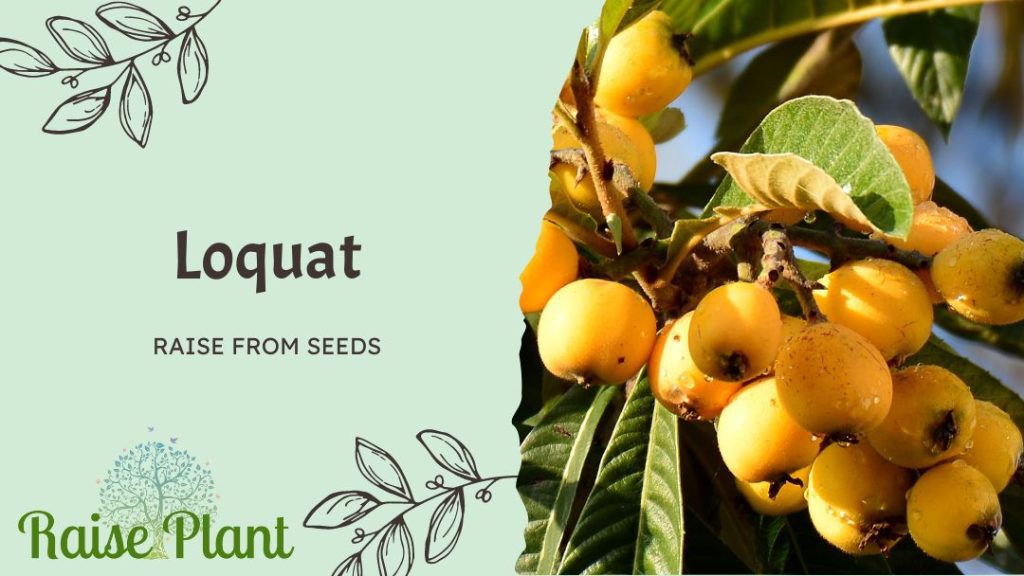
Preparing The Seeds For Planting
Discover the essential steps to successfully grow loquat from seeds, ensuring proper preparation for planting. These steps will enable you to achieve optimal results in cultivating your own loquat trees.
Collecting And Cleaning The Seeds:
- Begin by selecting ripe loquat fruits and gently squeezing or twisting them to release the seeds.
- Collect the seeds and remove any surrounding pulp or fruit residue.
- Rinse the seeds with clean water to eliminate any remaining debris.
Enhancing Germination Rates Through Soaking And Scarification:
- Soak the seeds in water for 24 to 48 hours, changing the water every 12 hours. This process helps to soften the seed coat and improve germination.
- After soaking, scarify the seed coat by carefully nicking or scratching it with a knife or sandpaper. This allows moisture to penetrate the seed and encourages quicker germination.
Creating Ideal Conditions For Seed Storage:
- Ensure the seeds are completely dry before storage to prevent mold or rot.
- Store the cleaned and scarified seeds in a cool, dry place, such as a labeled envelope or airtight container.
- Keep the seeds away from direct sunlight, extreme temperatures, and excessive humidity.
- Consider placing a desiccant packet in the storage container to absorb any moisture.
Remember, proper preparation of loquat seeds contributes to successful germination and increases your chances of growing healthy loquat plants.
Germinating Loquat Seeds
Germinating loquat seeds is a simple and rewarding way to grow your own loquat tree. With proper care and patience, you can start from seeds and watch your loquat tree flourish into a beautiful fruit-bearing plant.
Using The Paper Towel Method For Quick And Easy Germination:
- Start by moistening a paper towel with water.
- Fold the paper towel in half and place a few loquat seeds in between the two layers.
- Place the folded paper towel with the seeds in a plastic bag or container.
- Seal the bag/container and make sure it is airtight to keep the moisture in.
- Keep the bag/container in a warm location, such as on top of a refrigerator or near a radiator.
- Check the paper towel every few days to ensure it remains moist.
- After about 2-3 weeks, you should start to see the seeds germinating.
- Once the seeds have sprouted, carefully transfer them to a pot with potting soil, making sure to plant them with the sprouted end facing down.
- Water the pot lightly and place it in a warm and sunny location.
- Continue to water and care for the seedlings as they grow into strong and healthy loquat plants.
Steps To Follow For Successful Germination:
- Collect ripe loquats and remove the seeds from their flesh.
- Rinse the seeds under running water to remove any remaining fruit residue.
- Choose a germination method, such as the paper towel method or germinating directly in potting soil.
- Prepare the chosen germination method following the specific instructions.
- Place the seeds in the chosen medium and provide proper moisture and warmth.
- Monitor the seeds regularly to ensure they are germinating successfully.
- Once the seeds have sprouted, transfer them to pots with potting soil for long-term care.
- Provide adequate sunlight, water, and nutrients to promote healthy growth.
- Continue to monitor and care for the seedlings as they mature into loquat trees.
Monitoring And Troubleshooting Germination Issues:
- Regularly check the germinating seeds to ensure they have adequate moisture.
- If the seeds are drying out, lightly mist them with water or add moisture to the germination medium.
- Watch out for mold growth, which can indicate excessive moisture. If mold appears, remove the affected seeds and adjust the moisture levels.
- If the seeds fail to germinate, consider factors such as temperature, viability of the seeds, or the germination method. Adjust these factors accordingly to increase success rates.
- Pests and diseases can also affect germination. Keep an eye out for any signs of damage and take appropriate measures to protect the seeds.
Germinating Seeds In Potting Soil For Longer-Term Care:
- Start by filling a pot or seed tray with well-draining potting soil.
- Place the loquat seeds about an inch deep into the soil, making sure they are evenly spaced.
- Lightly water the soil to provide moisture for germination.
- Cover the pot or seed tray with plastic wrap or a plastic dome to create a greenhouse-like environment.
- Keep the pot or tray in a warm location with indirect sunlight.
- Check the soil moisture regularly and water as needed to maintain a slightly moist but not overly wet environment.
- Once the seeds have sprouted, remove the plastic cover and place the pots in a sunny location.
- Continue to water the seedlings regularly and provide adequate care as they grow into loquat plants.
Comparing The Pros And Cons Of Each Method:
- Paper towel method:
- Pros: Quick and easy, allows for monitoring of germination progress, seeds can be transferred once sprouted.
- Cons: Requires regular checking and maintenance of moisture levels, may result in lower success rates compared to germinating in potting soil.
- Germinating in potting soil:
- Pros: Simulates natural growing conditions, higher success rates, eliminates the need for transferring sprouted seeds.
- Cons: Requires longer-term care, may take longer for seeds to germinate compared to the paper towel method.
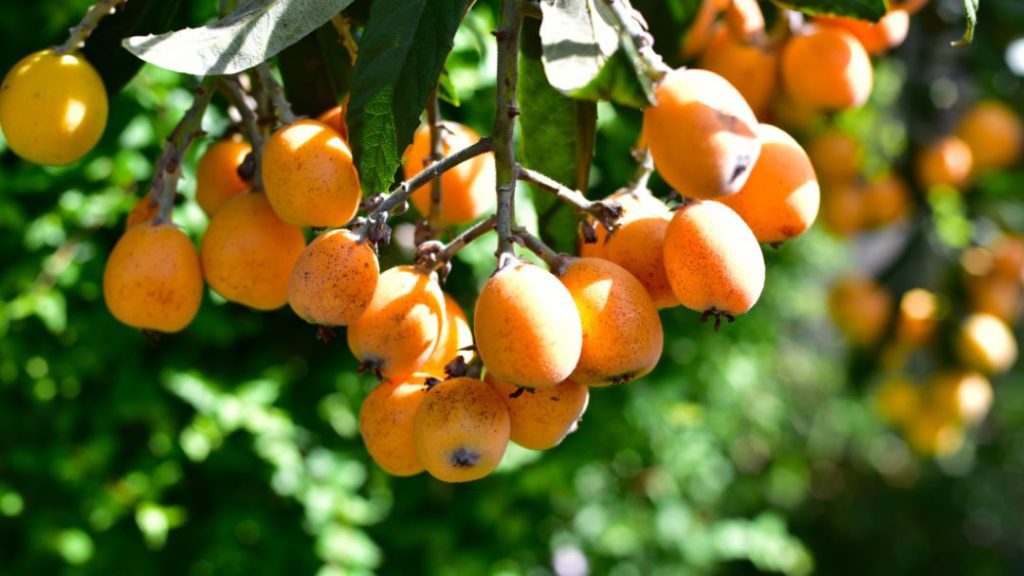
Nurturing And Caring For Loquat Seedlings
Learn how to successfully grow loquat trees from seeds by providing proper nurturing and care to the seedlings. Discover essential tips and techniques for ensuring the healthy development of your loquat seedlings.
Growing loquat trees from seeds can be a rewarding experience. Once your loquat seeds have germinated and started to grow, it’s important to provide them with the right care and attention to ensure healthy and robust seedlings. In this section, we will discuss the essential aspects of nurturing and caring for loquat seedlings.
Selecting The Right Container For Transplanting
When it comes to selecting a container for transplanting your loquat seedlings, consider the following:
- Choose a container that is at least 12 inches deep and wide enough to accommodate the roots of the seedling.
- Opt for a container with drainage holes to prevent waterlogged soil, which can lead to root rot.
- Use a container made of durable material, such as plastic or terracotta, that can withstand outdoor conditions.
Providing Adequate Light And Temperature For Growth
To promote healthy growth in loquat seedlings, ensure they receive the right amount of light and maintain suitable temperatures:
- Place the seedlings in a sunny location that receives at least six to eight hours of direct sunlight daily.
- If growing the seedlings indoors, consider using fluorescent grow lights to supplement natural light.
- Maintain temperatures between 55 to 75 degrees fahrenheit (12 to 24 degrees celsius) during the day and slightly cooler at night.
Watering And Fertilizing Guidelines For Healthy Seedlings
Proper watering and fertilizing are crucial for the development of strong, vigorous loquat seedlings. Follow these guidelines:
- Water the seedlings regularly, keeping the soil evenly moist but not soggy. Avoid overwatering, as it can lead to root rot.
- Use a well-draining soil mix that allows excess water to drain away effectively.
- Fertilize the seedlings every two to three weeks during the growing season with a balanced and soluble fertilizer.
- Start with a diluted fertilizer solution and gradually increase the strength as the seedlings mature. Follow the manufacturer’s instructions for dosage and application.
By providing the right container, adequate light, and temperature, along with proper watering and fertilizing, you can ensure the healthy growth of your loquat seedlings. With patience and care, you’ll soon have thriving young trees ready to be transplanted into your garden or larger pots.
Transplanting Loquat Seedlings
Transplanting loquat seedlings is an effective way to grow loquat trees from seeds. Just ensure you follow proper guidelines and transplant them at the right time for successful growth.
If you have successfully germinated loquat seeds, the next step is to transplant the seedlings into their permanent location. This process requires careful attention to ensure the seedlings’ survival and healthy growth. Below are the steps for transplanting loquat seedlings, along with tips to ensure proper root establishment and growth.
Preparing The Planting Site And Soil:
- Choose a well-draining planting site: Loquats prefer soil that drains well, as standing water can lead to root rot. Ensure the planting site has good drainage characteristics.
- Select a sunny location: Loquats thrive in full sun, so choose a spot that receives at least 6-8 hours of direct sunlight per day.
- Clear the area: Remove any weeds, rocks, or debris from the planting site to provide a clean environment for the seedlings.
- Improve the soil: Loquats prefer loamy soil with a slightly acidic to neutral ph level. If your soil is clayey or sandy, amend it with organic matter, such as compost or well-rotted manure, to improve its texture and nutrient content.
Steps For Safely Transferring The Seedlings:
- Prepare the seedlings: Once the loquat seedlings have grown to about 6-8 inches tall and have developed a few leaves, they are ready to be transplanted. Water the seedlings thoroughly the day before transplantation to help minimize transplant shock.
- Dig a hole: Create a hole in the planting site that is twice as wide and deep as the seedling’s root ball. This extra space allows the roots to spread easily and establish themselves.
- Gently remove the seedling from its container: Carefully tap the sides of the seedling pot to loosen the root ball. Hold the seedling firmly from the base and gently slide it out, taking care not to damage the delicate roots.
- Place the seedling in the hole: Position the seedling in the center of the hole, making sure that the topsoil around the root collar is level with or slightly higher than the ground level.
- Backfill the hole: Fill the hole with the soil mixture, gently pressing it around the roots to eliminate any air pockets. Avoid compacting the soil too tightly.
- Water the transplanted seedlings: Give the newly transplanted seedlings a good watering, ensuring the soil is evenly moist. This helps settle the soil and promotes root growth.
Ensuring Proper Root Establishment And Growth:
- Mulch around the seedlings: Apply a layer of organic mulch, such as wood chips or straw, around the base of the seedlings. Mulching helps retain moisture, suppresses weeds, and maintains a stable soil temperature.
- Water regularly: Loquat seedlings require regular watering, especially during dry spells. Keep the soil moist, but not waterlogged, to encourage root establishment and growth.
- Provide support if needed: If the seedlings are tall and thin, it may be helpful to provide support by staking them until their roots become more established.
- Protect from pests and diseases: Keep a watchful eye for any signs of pests or diseases, such as aphids or leaf spot. Take appropriate measures to protect the seedlings, such as using organic insecticides or practicing good sanitation.
By following these steps, you can ensure successful transplantation and promote healthy root establishment and growth for your loquat seedlings. Remember to provide proper care and maintenance as they continue to develop into mature trees. Happy gardening!
Pruning And Training Young Loquat Trees
Pruning and training young loquat trees is essential for successful growth from seeds. Learn the best techniques to encourage strong branches, proper shape, and abundant fruit production in your loquat tree.
Understanding The Importance Of Pruning For Optimal Growth And Fruit Production
Pruning plays a crucial role in maintaining the health and productivity of young loquat trees. By understanding the importance of pruning, you’ll be able to promote optimal growth and maximize fruit production. Here’s why pruning is essential:
- Encourages airflow: Properly pruned trees allow for better air circulation, reducing the risk of fungal diseases and promoting overall tree health.
- Controls tree size: Pruning helps manage the height and spread of the tree, making it easier to maintain and harvest fruit.
- Stimulates fruit production: Removing dead wood and excess branches directs the tree’s energy towards fruit development, resulting in a more abundant yield.
- Shapes the tree: Pruning allows you to shape the tree’s structure, promoting balanced growth and preventing the branches from becoming overcrowded.
Techniques For Shaping And Controlling The Tree’S Growth
To shape young loquat trees according to your preference and control their growth, implementing the right techniques is key. Here are some effective methods to shape and control your loquat tree:
- Heading cuts: This technique involves removing a portion of the branch or stem to encourage new growth. Make the cuts just above a dormant bud or side branch.
- Thinning cuts: Thinning cuts involve selectively removing entire branches or stems to improve air circulation, reduce density, and maintain an open tree structure.
- Training on a trellis: By training your loquat tree on a trellis, you can ensure the branches grow in a desired direction, creating a more manageable and aesthetically pleasing shape.
Timing And Frequency Of Pruning For Maximum Effectiveness
Pruning at the right time and with appropriate frequency is vital for achieving optimal results with your young loquat trees. Here’s what you need to know:
- Early spring pruning: Perform major pruning in early spring before new growth starts. This allows the tree to allocate its energy to new shoots and fruit production.
- Light maintenance pruning: Throughout the growing season, conduct light maintenance pruning to remove dead or diseased branches, water sprouts, or any branches interfering with the tree’s structure.
- Annual pruning: It’s recommended to prune young loquat trees annually to control their shape, remove dead wood, and encourage healthy growth.
- Avoid late-season pruning: Pruning late in the growing season may stimulate new growth that won’t have enough time to harden off before winter, making it more vulnerable to cold damage.
By understanding the importance of pruning, employing effective techniques for shaping and controlling growth, and timing your pruning appropriately, you can help your young loquat trees thrive and produce bountiful harvests. Happy pruning!
Maintaining A Healthy And Productive Loquat Orchard
Get expert tips on how to successfully grow a healthy and productive loquat orchard from seeds. Discover the best practices for maintaining your orchard to ensure a bountiful harvest.
Loquat orchards require proper care and maintenance to ensure healthy growth and maximize productivity. By following the right practices for soil preparation, pest and disease management, and seasonal care, you can create an environment that promotes the optimal growth of your loquat trees.
Here’s what you need to know:
Soil Preparation And Amendments For Long-Term Plant Health
To establish a thriving loquat orchard, it’s essential to pay attention to the soil quality and make necessary amendments. Here are some tips to ensure long-term plant health:
- Conduct a soil test to determine its current nutrient levels and ph balance.
- Loquats prefer well-drained soil with a ph range between 6.0 and 7.5.
- Add organic matter such as compost or well-rotted manure to improve soil structure and enhance nutrient retention.
- Mulch the soil around the trees to conserve moisture and suppress weed growth.
- Consider applying organic fertilizers specifically formulated for fruit trees, following the recommended dosage.
Pest And Disease Management Strategies
Protecting your loquat orchard from pests and diseases is crucial to maintain its productivity. Here are some strategies to effectively manage these challenges:
- Regularly inspect your trees for signs of pests, like aphids, scales, or mites. Remove infested leaves or branches promptly.
- Introduce beneficial insects, like ladybugs or lacewings, to naturally control pest populations.
- Apply appropriate organic insecticides or pesticides when necessary, following the instructions carefully.
- Monitor the orchard for any signs of diseases such as brown rot or powdery mildew.
- Prune the trees regularly to improve airflow and reduce disease susceptibility.
- Remove any fallen fruits or debris from the orchard to prevent the spread of diseases.
Seasonal Care And Maintenance Practices
To ensure healthy growth and a bountiful harvest, you need to provide proper care to your loquat orchard throughout the seasons. Here are some essential seasonal practices:
- Spring: Prune the trees to remove dead or diseased branches and encourage new growth. Apply a balanced organic fertilizer to provide necessary nutrients.
- Summer: Ensure adequate watering, especially during dry periods, to prevent water stress. Mulch the soil to retain moisture and control weeds.
- Fall: Harvest ripe loquats promptly, as leaving them on the tree for too long can attract pests. Consider thinning the fruit if overcrowding occurs.
- Winter: Protect young trees from frost by covering them with frost blankets or utilizing frost-protection measures. Monitor the orchard for potential winter diseases and take appropriate action.
By implementing these soil preparation techniques, pest and disease management strategies, and seasonal care practices, you can maintain a healthy and productive loquat orchard that yields delicious fruits year after year. Remember to adapt your approach based on your specific climate and growing conditions.
Happy loquat farming!
Harvesting And Enjoying The Fruits Of Your Labor
Growing loquat from seeds allows you to experience the joy of harvesting and tasting the fruits of your labor. Embrace the satisfaction of nurturing and enjoying this delicious fruit from your own backyard.
Grow Loquat From Seeds: Harvesting And Enjoying The Fruits Of Your Labor
Loquats are delightful and flavorsome fruits that can be grown from seeds, offering a rewarding experience for gardeners. After dedicating time and effort to nurture your loquat tree, it’s finally time to enjoy the fruits of your labor. In this section, we will explore when loquat fruits are ready to be harvested, the best techniques to preserve their quality during harvesting, and some mouthwatering recipes to savor their deliciousness.
Indicators Of Fruit Readiness
Determining the perfect moment to harvest loquat fruits is crucial to ensure optimal taste and ripeness. Keep an eye out for the following indicators:
- Color: Loquats should exhibit a warm, golden hue, and the skin should feel slightly soft to the touch.
- Texture: The fruits should have a slight give when gently squeezed, indicating that they are ripe and ready to be enjoyed.
- Size: Mature loquat fruits usually measure around 1.5 to 2 inches in diameter.
- Ease of removal: Loquat fruits should easily detach from the tree when gently twisted or lifted, signaling that they are fully ripe.
Remember, loquat fruits do not all ripen simultaneously, so it may be necessary to harvest them in multiple stages to enjoy them at their best.
Proper Harvesting Techniques For Preserving Fruit Quality
To ensure the utmost freshness and quality of your harvested loquat fruits, follow these recommended techniques:
- Gentle handling: Handle the fruits with care to avoid bruising or damaging their delicate skin.
- Using shears or scissors: Utilize shears or scissors to cut the stem about half an inch above the fruit, reducing the risk of damage.
- Harvest in the morning: Opt for harvesting your loquats early in the day, as they tend to be firmer and less prone to bruising than those plucked later in the day.
- Avoid overripe fruits: Harvesting fruits before they become overly ripe helps preserve their taste and texture.
By employing these methods, you can savor the full flavor of freshly harvested loquats and ensure their longevity.
Delicious Recipes And Culinary Ideas For Loquat Fruits
The sweet and tangy taste of loquats offers a myriad of culinary possibilities. Here are some delectable recipes and culinary ideas to make the most of your loquat harvest:
- Fresh loquat salad: Combine sliced loquats with mixed greens, goat cheese, toasted almonds, and a citrus vinaigrette for a refreshing salad bursting with flavors.
- Loquat jam: Simmer loquats with sugar, lemon juice, and a touch of cinnamon to create a delectable homemade jam that can be enjoyed on toast, pastries, or as a topping for yogurt.
- Loquat smoothie: Blend ripe loquats with yogurt, a banana, and a splash of honey for a smooth and creamy breakfast or snack option.
- Grilled loquat skewers: Thread loquat halves onto skewers, brush them with a honey-lime glaze, and grill until slightly caramelized for a unique and irresistible dessert.
Get creative in the kitchen and experiment with these recipes to unlock the amazing culinary potential of loquats.
With the knowledge of proper harvesting techniques and irresistible recipes in your arsenal, you will be able to revel in the joys and delectable rewards of growing loquats from seeds. So, have fun harvesting and savoring the delicious fruits of your labor!
Expanding Your Orchard Through Propagation Techniques
Expand your orchard by learning propagation techniques to grow loquat trees from seeds. Unlock the secrets of successful seed germination and nurture young saplings to maturity with these expert tips.
Loquats are delightful tropical fruit trees that can be grown from seeds, but did you know that there are other propagation techniques you can use to expand your loquat orchard? In this section, we will explore two effective methods: propagating through cuttings and grafting.
These techniques not only allow you to increase the size of your orchard but also maintain the desirable characteristics of your favorite loquat tree.
Propagating Through Cuttings And Grafting Methods
One way to expand your loquat orchard is through the use of cuttings. This simple method involves taking a small section of a healthy loquat tree and planting it to grow a new tree. Here are some key points to consider:
- Select a healthy tree: Choose a loquat tree that is vigorous and disease-free to ensure successful propagation.
- Timing is essential: Take cuttings during the dormancy period, which is typically in late winter or early spring.
- Cut and prepare the cutting: Select a young branch, around 8 inches long, and make a clean cut just below a leaf node. Remove the foliage from the lower half of the cutting.
- Application of rooting hormone: To improve rooting success, apply a rooting hormone to the cut end of the branch.
- Plant the cutting: Place the cutting in a well-draining potting mix, ensuring its bottom half is buried.
- Provide proper care: Keep the soil moist but not waterlogged and provide indirect sunlight. After a few weeks, roots should develop, and you can transplant the cutting into a larger container or directly into the ground.
Another effective technique to expand your loquat orchard is grafting. This method involves joining two different loquat varieties together to create a new tree with desirable qualities. Here’s what you need to know:
- Choosing compatible varieties: Select loquat varieties that have similar growth habits and are genetically compatible for successful grafting.
- Timing is crucial: Graft in late winter or early spring when the trees are dormant and sap flow is reduced.
- Prepare the scion and rootstock: The scion is a small section of the desired loquat variety, while the rootstock is a healthy loquat tree. Make a v-shaped cut on the rootstock and a matching cut on the scion. Fit them together, ensuring the cambium layers align.
- Secure the graft: Use grafting tape or a rubber band to tightly wrap the graft union, ensuring the scion and rootstock are securely joined.
- Provide post-graft care: Place the grafted tree in a sheltered location, away from direct sunlight. Maintain humidity around the graft by using a plastic bag or a humidity dome. Once the graft union has healed, gradually expose the tree to more light and eventually transplant it into the ground.
Tips For Successful Propagation And Increasing Your Orchard Size
To maximize your success when propagating loquats and expanding your orchard, consider these helpful tips:
- Choose healthy and disease-free plant material for propagation.
- Ensure proper timing by taking cuttings or grafting during the tree’s dormancy period.
- Use clean tools to prevent the spread of diseases.
- Employ proper care techniques for the cuttings or grafted trees, including adequate watering, sunlight, and protection from extreme temperatures.
- Experiment with different propagation methods to determine which works best for you.
- Keep records of your successful propagations to track the performance of different varieties.
By implementing these tips, you can increase your loquat orchard and enjoy a bountiful harvest for years to come.
Benefits Of Expanding Your Loquat Orchard
Expanding your loquat orchard can bring numerous benefits. Here are a few reasons why it’s worth considering:
- Variety and diversity: By growing different loquat varieties, you can enjoy a wider range of flavors, sizes, and colors.
- Increased yield: A larger orchard means more fruit, providing you with a greater supply to enjoy fresh, share with others, or even sell.
- Pollination assistance: Having multiple loquat trees in your orchard can enhance cross-pollination, resulting in improved fruit set and larger crop yields.
- Selection of desirable characteristics: Through propagation techniques, you can ensure that your new trees possess the specific traits you desire, such as disease resistance, flavor profiles, or growth habits.
Expanding your loquat orchard not only allows you to nurture your passion for fruit cultivation but also provides an opportunity to share the delicious rewards with family, friends, and customers.
Frequently Asked Questions For Grow Loquat From Seeds
How Long Does It Take To Grow A Loquat Tree From Seed?
It can take anywhere from 2 to 8 years for a loquat tree to grow from a seed.
Are Loquats Easy To Grow From Seed?
Yes, loquats are easy to grow from seed. Plant the seeds in a well-draining soil mixture. Keep the soil moist but not overly wet. Loquats require full sun to partial shade. Water the plants regularly, especially during dry periods. Provide mulch around the base of the plant to retain moisture.
Loquats can tolerate a variety of soil types but prefer slightly acidic soil. Fertilize the plants with a balanced fertilizer once every few months. Prune the trees to maintain shape and control their size. Loquats usually take a few years to start bearing fruit.
Harvest the ripe fruits by twisting them gently. Enjoy the sweet and tart flavors of homegrown loquats!
How Long Does It Take For A Loquat Tree To Bear Fruit From Seed?
A loquat tree typically takes about 3 to 5 years to bear fruit from a seed.
Do You Need 2 Loquat Trees To Produce Fruit?
Yes, you need two loquat trees to produce fruit.
Conclusion
To sum up, growing loquats from seeds can be a rewarding and fulfilling experience. By following the steps outlined in this blog post, you can successfully germinate and cultivate your own loquat tree. Remember to choose ripe and healthy seeds, provide the right conditions for germination, and be patient throughout the process.
As the loquat tree grows, ensure it receives adequate sunlight, water, and nutrients. Regular pruning and taking proper care of the tree will promote healthy growth and encourage fruit production. By taking these steps, you can enjoy the beauty of the loquat tree in your garden and savor the delicious and nutritious fruit it provides.
So why wait? Start growing loquats from seeds and embark on your own fruitful gardening journey today!

